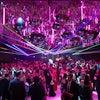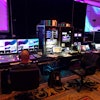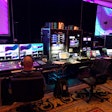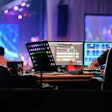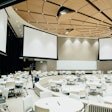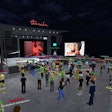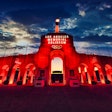
While splashy visual effects such as 3-D mapping have been capturing the attention of event professionals and wowing guests for the past few years, there has been a quiet revolution going on in the world of audio production. Equipment is getting smaller and smarter, providing greater options for planners and improved sound for attendees. We talked to David Smith, president of audio, lighting, and staging company ShowPro, to learn more about the latest innovations.
Wi–Fi mics
“Wireless microphones now communicate with the base station via Wi-Fi. The minute it senses there is a frequency problem, it will communicate in milliseconds, and the base station will assign a new frequency that isn’t problematic. All the things we’ve had to live with—mics cutting out and P.A. systems squealing—these are things we don’t have to live with anymore. There are even cards you slide into these consoles that control multiple open microphones. If nobody is speaking, it mutes the mic. So instead of having two or three guys pushing faders up and down to get levels matched, these digital processors do all that for you. The noise is gone, and a soft-spoken female voice versus a boisterous, loud male voice will [come] out at exactly the same level.”
Digital consoles
“They are half the size they used to be with 10 times the power. Instead of being 6 or 8 feet long, they are now 4 feet, and you can call up multiple channels with the push of a button. You can stick a thumb drive into a digital console and get a multitrack recording without spending any more money. And the quality is great—you can get the sound and the feel of a beautiful, old analog preamp, but it’s built into a button on your console. You bring all this power in without taking up a bunch of space in the room. It’s very stealth.”
Computer-controlled sound
“The [audio] speakers themselves now are absolutely revolutionary. You can physically steer sound with these line array cabinets and digital processors and build models on a computer to literally, physically steer the sound waves. We can get them around columns. We can compensate for any sort of architectural feature in the room and focus sound in the same way you would focus light. The speakers are much smaller and more efficient, and the amplifiers go in the speaker cabinets, so there is no longer a rack full of amplifiers. They are also much lighter, so you are able to hang stuff that you couldn’t hang before because of the weight factor.”
Smaller cables
“Typically with events in tents or ballrooms, you’ve got this big, fat piece of copper that has to be run over doorways or hung, and it’s such a big, unsightly thing. Since everything is digital now, all the microphones plug into a box on the stage—it’s a piece of Ethernet, like the cable in your Internet jack, that travels from the stage to the console. It’s easy to hide under a piece of carpeting. That’s huge—not having to deal with a 100-meter-long snake that is inevitably going to turn into a big lump that needs to be dressed by the scenic guys.”
